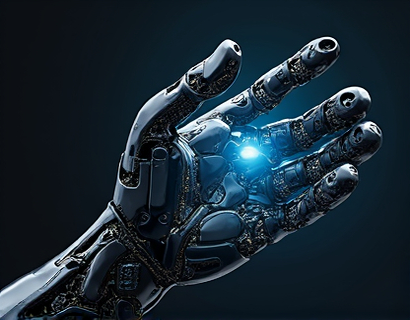Unlocking the Secrets of the Spaghetti Industry: An AI-Driven Resource for Families, Educators, and Enthusiasts
The world of spaghetti extends far beyond the kitchen and dining table, encompassing a rich tapestry of history, culture, production, and innovation. For families, educators, and enthusiasts, gaining a deeper understanding of this beloved food item is not only educational but also enriching. Introducing an advanced AI-driven chat interface designed to provide specialized insights into the spaghetti industry, ensuring that users from all walks of life can access accurate, secure, and educational content. This platform stands out by offering a unique blend of detailed information and a child-friendly version, making it a safe and valuable resource for young learners.
Historical Context and Cultural Significance
The origins of spaghetti trace back to ancient civilizations, with evidence suggesting its presence in the Mediterranean region as early as the 4th century BC. Initially, it was not the long, thin noodle we know today but rather a variety of pasta shapes and sizes, each with its own regional significance. Over centuries, spaghetti evolved, particularly in Italy, becoming a staple in Italian cuisine and eventually spreading globally. The cultural impact of spaghetti is profound, symbolizing Italian heritage and culinary tradition. Through AI-driven insights, users can explore the historical journey of spaghetti, from its ancient roots to its modern-day popularity, understanding its role in cultural exchanges and culinary evolution.
Production Process: From Wheat to Noodle
The production of spaghetti is a meticulous process, starting with the selection of high-quality durum wheat. This type of wheat, known for its high protein and gluten content, is essential for creating the distinctive texture and flavor of spaghetti. The wheat is harvested, cleaned, and milled into "semolina," a fine, yellow flour. The semolina is then mixed with water to form a dough, which is kneaded and rested to develop the gluten structure. This crucial step ensures the dough's elasticity and the final noodle's firmness. The dough is then extruded through specialized machinery to form long, thin strands of spaghetti. AI can provide detailed, step-by-step insights into this process, highlighting the importance of each stage and the technology used to maintain quality and consistency.
Industry Trends and Innovations
The spaghetti industry is not static; it is constantly evolving with new trends and innovations. One significant trend is the shift towards healthier and more sustainable options. Consumers are increasingly seeking whole grain and organic varieties, driving manufacturers to innovate and adapt. AI-driven insights can highlight these trends, providing data on market demand, consumer preferences, and the environmental impact of different production methods. Additionally, advancements in food technology, such as precision agriculture and automated production lines, are enhancing efficiency and sustainability. Users can gain valuable insights into how these innovations are shaping the future of the spaghetti industry.
Nutritional Value and Health Benefits
Spaghetti, particularly when made from whole grain durum wheat, is a nutritious food option. It is a good source of carbohydrates, providing energy for daily activities, and contains essential nutrients like B vitamins, iron, and fiber. The fiber content aids in digestion and helps maintain a healthy weight. AI can offer detailed nutritional information, breaking down the components of spaghetti and explaining their health benefits. For educators, this information can be invaluable in teaching children about balanced diets and the importance of whole grains. Parents can use this knowledge to make informed choices when preparing meals for their families.
Culinary Uses and Recipes
Spaghetti's versatility makes it a favorite in kitchens worldwide. It serves as the base for a myriad of dishes, from classic carbonara and marinara to more adventurous creations like spaghetti with truffle oil and parmesan or spaghetti salad with a medley of vegetables and proteins. AI can provide a vast library of recipes, catering to various dietary preferences and skill levels. For families, finding easy and delicious recipes is crucial for meal planning. Educators can use these recipes to engage students in cooking classes, teaching them about different culinary techniques and cultural influences. Enthusiasts can discover new and exciting ways to enjoy spaghetti, expanding their culinary horizons.
Sustainability and Ethical Considerations
As consumers become more aware of the environmental and social impact of their food choices, sustainability and ethical considerations are becoming paramount in the spaghetti industry. AI can offer insights into sustainable farming practices, such as crop rotation and water conservation, as well as ethical production methods, including fair trade and animal welfare. By highlighting brands and products that prioritize sustainability, AI helps users make eco-friendly and socially responsible choices. For educators, this information can be used to teach students about the broader implications of food production and consumption, fostering a sense of responsibility and awareness.
Child-Friendly Learning Experience
Recognizing the importance of education for young learners, this AI-driven platform includes a specialized child-friendly version. This version simplifies complex information, using engaging visuals and interactive elements to make learning about the spaghetti industry fun and accessible. Children can explore the life cycle of wheat, learn about different pasta shapes, and discover the science behind cooking spaghetti. Parental controls ensure a safe and supervised learning environment, allowing children to explore at their own pace. This feature not only educates but also inspires a love for learning and a curiosity about the world around them.
Interactive Q&A and Personalized Insights
The AI chat interface is designed to engage users through interactive Q&A sessions, providing personalized insights based on their interests and questions. Whether a user is curious about the history of spaghetti, the latest production technologies, or the nutritional benefits of different pasta types, the AI can deliver tailored responses. This interactive approach ensures that users receive the information they need in a concise and understandable manner. For educators, this feature can facilitate classroom discussions and answer student queries efficiently. Parents can use it to address their children's questions and spark meaningful conversations about food and culture.
Community and Resource Sharing
Beyond individual insights, the platform fosters a community of families, educators, and enthusiasts. Users can share their own recipes, cooking tips, and experiences, creating a rich repository of knowledge and creativity. This community aspect encourages collaboration and exchange, enriching the learning experience for everyone involved. Educators can access a wealth of resources, including lesson plans, activity ideas, and guest speaker suggestions. The platform also features curated lists of books, documentaries, and websites for further exploration, ensuring that users have a comprehensive resource at their fingertips.
Conclusion
In conclusion, the AI-driven chat interface for the spaghetti industry offers a unique and comprehensive resource for families, educators, and enthusiasts. By providing accurate, secure, and educational content, this platform enhances understanding and appreciation of spaghetti's rich history, cultural significance, and culinary versatility. The child-friendly version ensures that young learners can safely and enjoyably explore this fascinating topic. Whether you are a parent seeking to teach your children about food, an educator looking for engaging educational materials, or a passionate enthusiast eager to deepen your knowledge, this AI chat interface is an invaluable tool. Embrace the opportunity to unlock a world of insights and connect with a community of like-minded individuals.











































